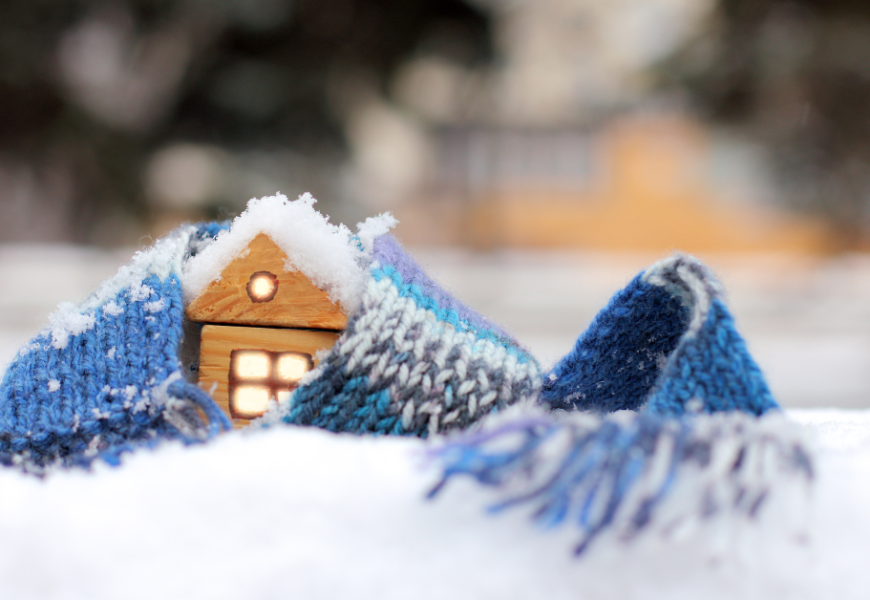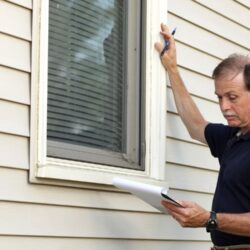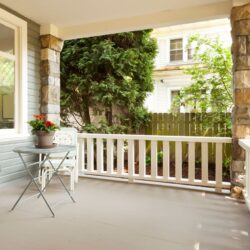Winter weather brings beauty and tranquility, but it also brings a host of potential risks to your property. The season can wreak havoc on homes and businesses, from heavy snow to icy conditions. Understanding common winter-weather property claims and taking preventative steps can save you from costly repairs and insurance claims. Here are some of the most common winter-weather property claims and tips on how to avoid them.
Frozen Pipes
What Happens:
Frozen pipes are one of the most common winter claims. Water inside pipes can freeze as temperatures drop, causing them to expand and burst. This leads to extensive water damage that can affect walls, ceilings, floors and personal belongings.
How to Avoid:
- Insulate Pipes: Use pipe insulation, especially in attics, basements and crawl spaces that are more susceptible to extreme temperatures.
- Keep the Heat On: Even when you’re away, keep your thermostat set to a minimum of 55°F (13°C).
- Open Cabinet Doors: If the temperature drops significantly, open the cabinet doors under sinks, particularly those on exterior walls, to allow warm air to circulate.
- Drip Faucets: Allow a slow water drip from faucets connected to vulnerable pipes to keep water moving and prevent freezing.
Roof Damage from Heavy Snow and Ice
What Happens:
Accumulating snow and ice on roofs can lead to several issues, such as ice dams and structural damage. Ice dams form when snow on the roof melts, runs down the surface, and refreezes at the eaves, preventing water from draining. This trapped water can seep under shingles and into the home, leading to leaks and mold growth.
How to Avoid:
- Regular Roof Inspections: Have a professional inspect your roof to ensure it is in good condition, particularly before the snow season.
- Remove Snow: After heavy snowfalls, use a roof rake with a long extension to remove snow from your roof, particularly near the eaves. Be cautious to avoid damaging the shingles.
- Install Ice Melt Systems: Consider installing roof heating cables along eaves and valleys to prevent ice dam formation.
- Clear Gutters: Ensure your gutters are free of leaves and debris so melting snow can drain properly.
Slip and Fall Accidents
What Happens:
Icy sidewalks, driveways and walkways are significant causes of slip-and-fall accidents. These injuries can be costly in terms of medical bills, and property owners can also be liable for injuries on their premises.
How to Avoid:
- Salt and Sand: Keep a stock of de-icer, salt, or sand to spread on walkways and driveways. Apply it as soon as snow begins to accumulate.
- Shovel Regularly: Shovel walkways, stairs and driveways regularly during snowstorms, especially after significant snowfall.
- Use Non-Slip Mats: Place non-slip mats near entryways to absorb water and prevent slippery conditions inside the home.
- Install Lighting: Ensure outdoor lighting is sufficient, particularly in areas like stairs and walkways, so that icy patches are visible.
Falling Tree Branches
What Happens:
Snow and ice accumulation can weigh down tree branches, causing them to snap and fall, often damaging roofs, cars, fences or power lines. These types of claims can result in significant damage, particularly when large branches break.
How to Avoid:
- Prune Trees: Trim branches that hang over your home, roof or driveway before winter arrives. This reduces the risk of branches falling during a snowstorm.
- Clear Snow from Trees: Gently shake tree branches to remove heavy snow after storms. Be careful not to cause further damage, but this can prevent branches from snapping under the weight.
Flooding from Melting Snow
What Happens:
When snow begins to melt rapidly, it can overwhelm drainage systems, leading to flooding. This is particularly problematic for properties located in low-lying areas or near rivers and streams. Basement flooding from snowmelt is common in spring, but rapid thawing during winter can also cause issues.
How to Avoid:
- Maintain Proper Drainage: Clear all drains or gutters to ensure water can flow freely and doesn’t pool around your property.
- Grade Landscaping Away from the Foundation: Ensure your landscaping slopes away from your home so melting snow can drain properly.
- Install a Sump Pump: If you’re in a flood-prone area, consider installing a sump pump to help manage excess water in your basement.
Damage from Winter Storms
What Happens:
Winter storms, including blizzards and ice storms, can damage property from wind, snow and ice. Flying debris, fallen power lines and severe winds can cause significant damage to your home’s exterior, windows, and roofs.
How to Avoid:
- Reinforce Windows and Doors: Install storm windows or window film to protect against wind and flying debris.
- Secure Outdoor Items: Bring in or securely store outdoor furniture, decorations, and other items that could be blown around in high winds.
- Check for Weak Trees: Look for dead or weakened trees near your home and remove them before they can fall during a storm.
Fire Hazards from Space Heaters
What Happens:
Using space heaters to keep warm is common during winter, but improperly maintained or used heaters can lead to fires. Many fire claims during winter are caused by space heaters left unattended or placed too close to combustible materials.
How to Avoid:
- Follow Manufacturer Guidelines: Always follow the manufacturer’s safety guidelines when using space heaters, including placing them away from flammable items.
- Turn Off When Unattended: Never leave a space heater running when you leave the room or go to sleep.
- Maintain Heaters: Clean and inspect your space heaters regularly to ensure they function correctly.
While winter weather presents a unique set of challenges for property owners, many of these risks can be mitigated with some preparation and proactive maintenance. Addressing potential issues like frozen pipes, snow accumulation and fire hazards can reduce the likelihood of property damage and costly insurance claims during the colder months. Stay ahead of the weather, and your property will remain safe and secure throughout the season.










